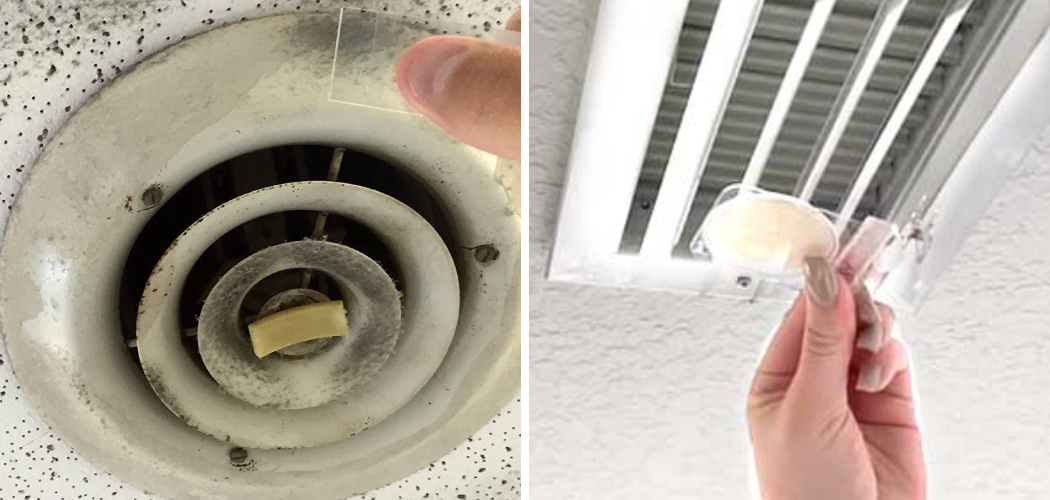The quest for a healthier living environment has increasingly spotlighted the importance of maintaining pristine indoor air quality, with particular attention on the need to test for mold in air vents. Mold, a perennial nemesis in many households and buildings, thrives in air ducts and vents due to the presence of moisture and organic material, making these hidden areas ripe for mold growth.
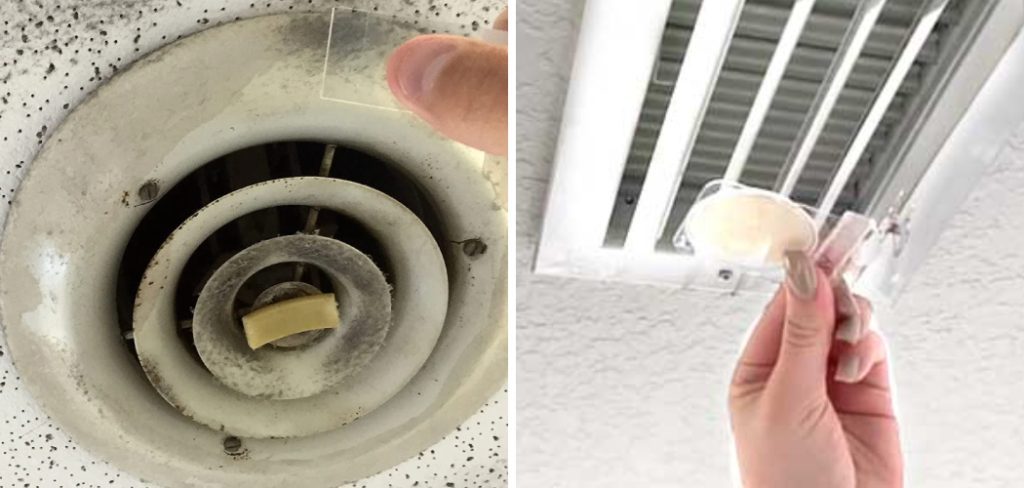
Learning how to test for mold in air vents is crucial not only for preserving structural integrity but also for safeguarding the health of occupants. Exposure to mold spores can lead to a myriad of health concerns, ranging from minor allergic reactions to more severe respiratory conditions.
Common signs of mold growth include a musty odor, visible mold spots near vent areas, and health symptoms such as coughing, sneezing, and headaches among the occupants. Understanding these signs and knowing how to effectively test and address mold contamination in air vents is essential for maintaining a healthy indoor environment.
How Mold Enters Air Vents
Mold enters air vents through a variety of sources, primarily relying on moisture and organic matter to flourish. HVAC systems, in their quest to regulate air temperature and quality, inadvertently become hotbeds for mold contamination.
The natural presence of moisture in these systems, whether from humidity, condensation, or leakage, provides the perfect breeding ground. Additionally, organic matter, such as dust and pollen, accumulates within the ductwork, offering mold the necessary nutrients to grow.
Mold spores, omnipresent in the outdoor environment, can easily infiltrate indoor spaces through open doors, windows, and ventilation systems. Once inside, these spores find hospitable conditions in air vents and ductwork, where they can remain undetected and multiply.
The dark, moist, and nutrient-rich environment of the ducts presents an ideal scenario for spores to establish colonies. The continuous airflow then aids in the dispersal of spores throughout the building, exacerbating the spread of mold.
Given these conditions, the importance of regular inspection and testing to detect mold growth in air vents cannot be overstated. Frequent checks can identify early signs of mold presence, preventing it from becoming a larger issue.
Testing, particularly knowing how to test for mold in air vents, becomes a critical step in mold prevention and maintenance of healthy indoor air quality. Regular inspection and prompt action upon detection can significantly minimize the risks associated with mold contamination.
Health Risks Associated with Mold in Air Vents
A. Discussing Health Effects of Exposure to Mold Spores in Indoor Air
Exposure to mold spores in indoor air can have a plethora of health effects, ranging from mild to severe. Individuals may experience allergic reactions, including symptoms such as sneezing, runny or blocked noses, itchy eyes, and skin rashes. For those with asthma or other respiratory conditions, the presence of mold can exacerbate symptoms, leading to increased difficulty breathing, wheezing, and frequent asthma attacks.
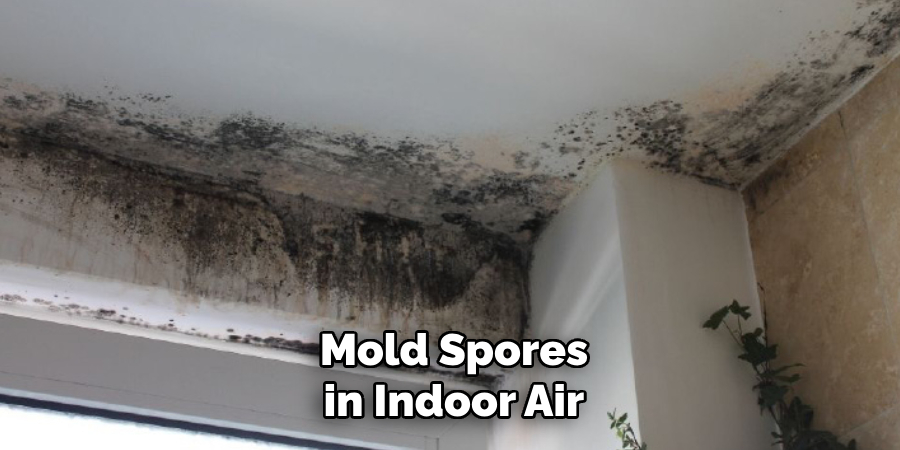
In more severe cases, exposure to certain types of toxic molds, like black mold (Stachybotrys chartarum), can lead to serious health issues such as mycotoxicosis, with symptoms including persistent headaches, fatigue, memory loss, and even depression.
B. Highlighting Vulnerable Populations at Risk of Adverse Health Effects from Mold Exposure
Vulnerable populations, particularly infants, children, the elderly, and individuals with pre-existing respiratory conditions or compromised immune systems, are at a higher risk of facing adverse health effects from mold exposure. These groups may experience more pronounced symptoms and potentially face longer-term health complications due to their increased sensitivity to allergens and airborne irritants.
C. Emphasizing the Need for Prompt Action to Address Mold Contamination in Air Vents
Given the potential health risks associated with mold exposure, it is imperative to detect mold in air vents promptly. Identifying and addressing mold contamination early can mitigate health risks, protecting the well-being of all occupants, especially those most vulnerable.
Failure to take timely measures can lead to the proliferation of mold throughout the indoor environment, exacerbating health risks and potentially leading to more costly and extensive remediation efforts in the future.
Common Symptoms of Mold Contamination
Mold contamination within air vent systems often goes unnoticed until occupants start displaying health symptoms or until mold becomes visually detectable. Common signs of mold exposure in occupants include allergic reactions like sneezing, coughing, sore throat, and dermatitis.
Additionally, individuals might experience respiratory issues, such as difficulty breathing, wheezing, or exacerbating existing asthma conditions. These symptoms can suggest the presence of mold spores in the indoor air environment, which are being circulated through the air vent system.
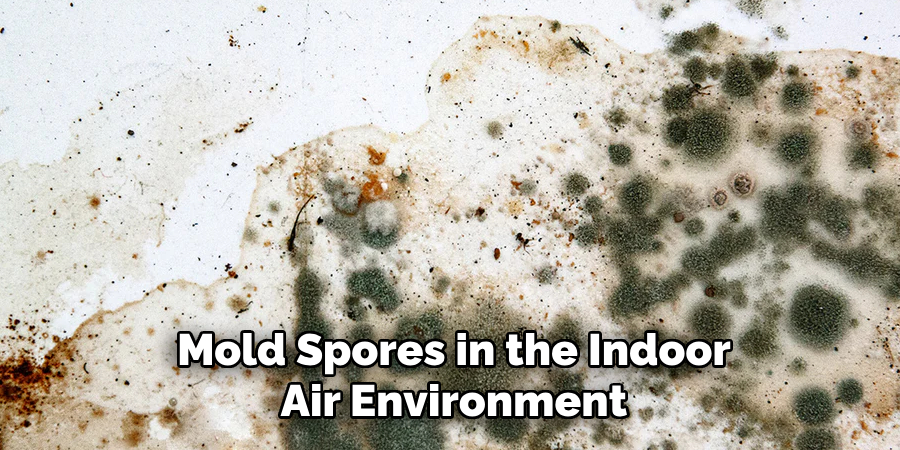
Odors and visual signs are also critical indicators of mold growth in and around air vents. A musty or earthy smell often accompanies mold growth, even if the mold itself is not visibly apparent. Meanwhile, visible signs might include dark spots or patches near vent areas alongside any surfaces that have prolonged exposure to moisture. Such odors and visual cues should prompt immediate investigation and testing for mold in air vents.
Raising awareness about these symptoms and signs is crucial. Early detection of mold can prevent more severe health implications and reduce the need for extensive remediation efforts. Occupants and property managers should remain vigilant, looking out for these common symptoms and visual indicators of mold contamination. Prompt testing for mold in air vents upon noticing any of these signs can significantly mitigate potential risks to health and structural integrity.
Preparation for Testing
Proper preparation is paramount before testing for mold in air vents to ensure accurate results and safeguard the health of those involved. Understanding the importance of preparation drills down to the need for accurate identification of mold species, which can influence the approach to remediation and health precautions. It also encompasses setting up a safe environment for the individuals conducting the tests.
A. Understanding the Importance of Proper Preparation Before Testing for Mold in Air Vents
Proper preparation for mold testing begins with a clear understanding of why meticulous planning and specific protocols are necessary. It ensures the safety of the person conducting the test and minimizes the risk of contaminating other areas of the building. Preparation also includes educating oneself on the different types of mold that could be present and understanding the implications of the findings.
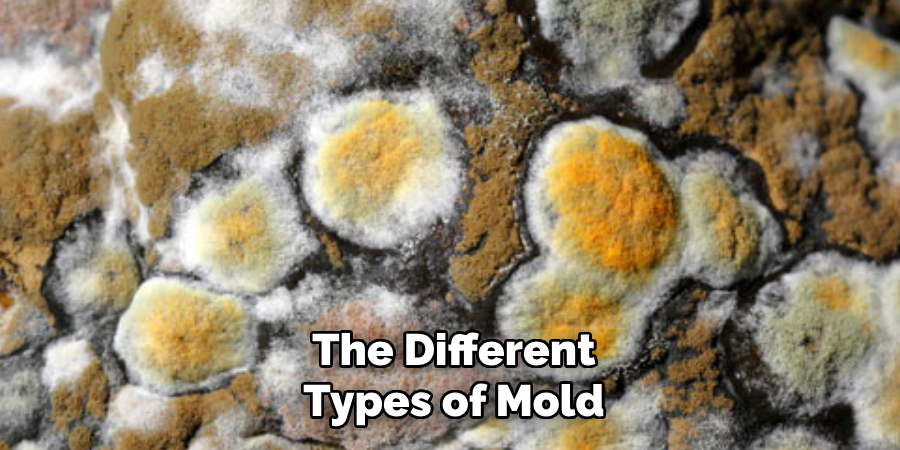
B. Gathering Necessary Supplies and Equipment for Mold Testing
The essential supplies for mold testing include mold testing kits, which may consist of petri dishes, swabs, and substance-specific testing strips. Personal protective gear is crucial to protect against mold exposure and may include gloves, N-95 respirators, and safety glasses. Ensuring you have a comprehensive list of the needed supplies before starting the test is crucial for an efficient and safe mold inspection process.
C. Ensuring Safety Precautions and Following Guidelines for Handling Mold Testing Materials
Adhering to safety precautions cannot be overstated when handling mold testing materials. It involves wearing the appropriate protective gear at all times, carefully following the instructions provided with mold testing kits, and being aware of the proper procedures for collecting samples to avoid contamination. It’s equally important to familiarize oneself with the guidelines for post-test actions, including safely disposing of testing materials and sanitizing equipment.
Types of Mold Testing
Various testing methods are employed to detect mold in air vents within the framework of identifying and addressing mold contamination. These strategies are pivotal in establishing the presence and extent of mold infestation, facilitating targeted remediation efforts.
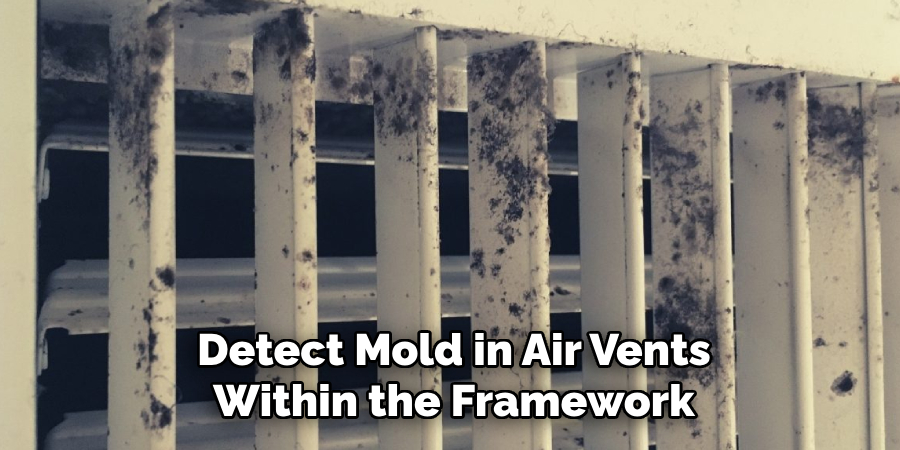
A. Exploring Different Methods for Testing Mold in Air Vents
There are primarily two methods used for testing mold in air vents – surface sampling and air sampling. Surface sampling involves collecting samples directly from the air vents or nearby surfaces to test for mold spores.
This can be done using swabs, tape lifts, or other collection methods designed to gather mold from specific areas. On the other hand, air sampling measures the concentration of mold spores in the indoor air. This method typically uses a device that traps air and any suspended spores onto a culture medium or a sticky surface for analysis.
B. Discussing the Pros and Cons of Each Testing Method in Relation to Air Vent Environments
Each mold testing method offers its advantages and limitations, particularly when applied to air vent environments. Surface sampling provides direct evidence of mold growth and its specific location, which is beneficial for targeted cleaning.
However, it may not accurately reflect the air quality or the potential for airborne mold spores to affect occupant health. Air sampling, while effective in assessing indoor air quality and exposure risks, may not identify the exact source of mold growth, requiring comprehensive testing of multiple areas for a complete assessment.
C. Understanding the Role of Professional Testing Services in Comprehensive Mold Assessment
Professional mold testing services play a critical role in a comprehensive mold assessment. Experts in mold detection are equipped with advanced tools and the technical expertise to accurately interpret testing results.
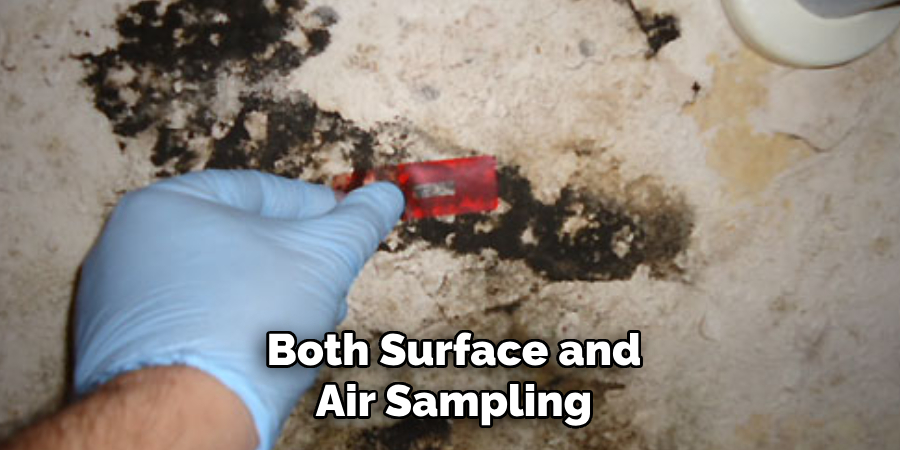
They can conduct both surface and air sampling effectively, choosing the most appropriate method based on the specific conditions of the air vent environment. Furthermore, professional services can offer insights into the type of mold present and its potential health risks, guiding the development of a more informed and effective remediation strategy.
How to Test for Mold in Air Vents: Conducting Air Sampling
Air sampling plays a pivotal role in identifying mold spores circulating through HVAC systems, providing valuable insights into indoor air quality and potential health risks. This chapter will explore the comprehensive approach to air sampling, encompassing the methodology, pinpointing optimal sampling locations and timing, and analyzing the results for informed decision-making.
A. Explaining the Process of Air Sampling for Mold Spores in HVAC Systems
Air sampling for mold spores involves collecting air samples from various locations within the HVAC system and analyzing them for the presence of mold. The process typically employs a spore trap sampler, which draws in a measured volume of air. The air flows over a sticky surface, trapping mold spores present in the air.
These samples are then sent to a laboratory for analysis, where technicians stain and examine the trapped spores under a microscope to identify the mold species and calculate the concentration of spores per cubic meter of air.
B. Identifying Ideal Sampling Locations and Times for Accurate Results
Selecting the right locations and times for air sampling is crucial for obtaining representative and meaningful results. Ideal sampling locations are often at the return and supply vents, as they provide a cross-section of the overall air quality being circulated throughout the building.
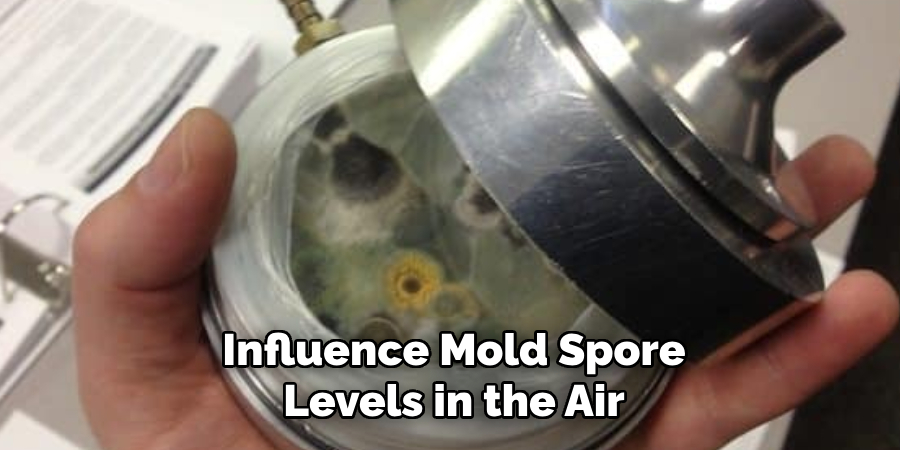
It’s also beneficial to take samples from areas where mold presence is suspected or where moisture accumulation is common. Timing plays a critical role; sampling during periods of typical usage, such as working hours for office buildings, ensures the results reflect the average air quality conditions experienced by occupants. Variations in weather and seasonality should also be considered, as they can influence mold spore levels in the air.
C. Interpreting Results of Air Sampling Tests and Understanding Mold Spore Levels
The interpretation of air sampling results hinges on understanding mold spore levels and their potential implications for indoor air quality and health. Laboratories provide a count of spores per cubic meter of air, which can be compared against baseline outdoor air levels and industry standards to gauge the severity of mold proliferation.
Higher spore concentrations indoors compared to outdoor air indicate an indoor source of mold growth. Understanding the types of mold identified is equally important, as certain species pose greater health risks than others. Interpreting these results allows for a strategic response, whether it’s targeted cleaning, further investigation, or remediation efforts, to address the mold issue effectively.
How to Test for Mold in Air Vents: Performing Surface Sampling
Surface sampling for mold growth on air vent surfaces offers a direct method for capturing physical evidence of mold presence. This technique typically involves the use of swabs, tape lifts, or bulk samples, which are then analyzed in a laboratory to identify the mold species and assess the concentration of spores. Swab samples are ideal for collecting mold from soft or porous surfaces, while tape lifts are better suited for hard surfaces. Bulk samples may involve removing a piece of the contaminated material itself for comprehensive testing.
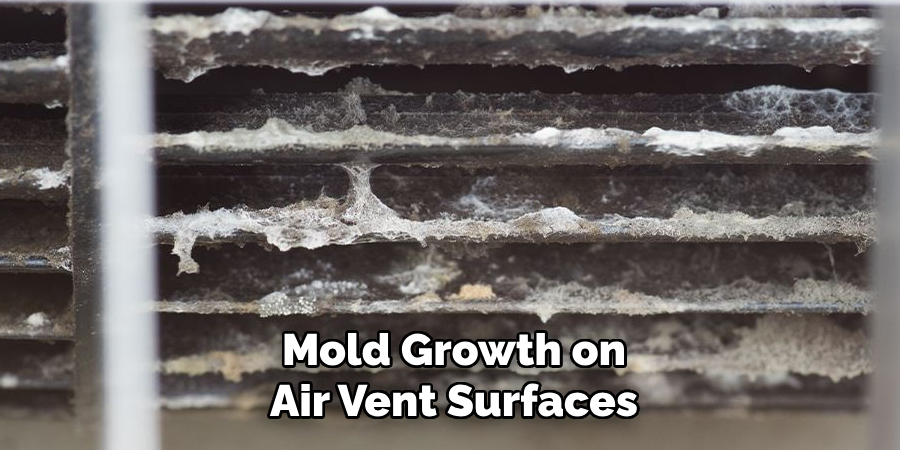
Identifying target areas for surface sampling is crucial. It should be based on visible signs of mold growth or places suspected of harboring mold due to moisture problems, such as areas near leaks, condensation sites, or within air vents that have reduced airflow. It’s also wise to sample several areas to accurately determine the extent of the mold contamination throughout the HVAC system.
Interpreting the results of surface sampling tests involves comparing the types and concentrations of mold spores found against acceptable limits. A high concentration of mold spores or the presence of toxic mold species like Stachybotrys chartarum (black mold) may indicate a severe mold problem, necessitating professional remediation. Understanding the variety and concentration of mold present helps assess the contamination’s severity and plan the appropriate response to ensure a safe and healthy indoor environment.
Analyzing Test Results
Analyzing the test results is a critical step in the assessment of mold contamination within HVAC systems. This phase aims to understand the implications of the findings thoroughly and outline the next steps for remediation or further investigation.
A. Understanding Laboratory Reports and Interpretation of Mold Test Results
Laboratory reports on mold tests provide a quantitative and qualitative analysis of mold spores present in the air and on surfaces. These reports detail the concentration of spores per cubic meter of air (for air samples) or the type and amount of mold present on sampled surfaces.
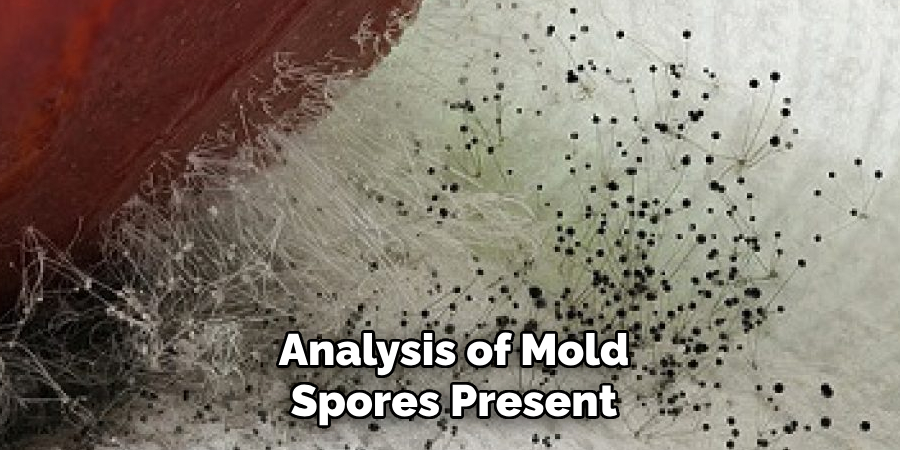
Interpreting these results requires comparing them with established baseline levels and understanding the significance of the types of mold detected. Reports often categorize mold levels as normal, slightly elevated, or high, guiding the necessity of remediation actions.
B. Identifying Types of Mold Species Detected in Air Vents and Assessing Health Risks
The specific types of mold species identified play a crucial role in assessing the health risks associated with the contamination. Common molds like Cladosporium, Penicillium, and Aspergillus are often found in indoor environments and may not pose significant health risks to the general population.
However, the presence of toxic molds, such as Stachybotrys chartarum (black mold), requires immediate action due to potentially severe health implications, including respiratory issues and allergic reactions.
C. Consulting with Mold Remediation Professionals for Expert Analysis and Recommendations
After receiving and understanding the test results, it is advisable to consult with mold remediation professionals for an expert analysis and to discuss the best course of action. These specialists can offer insights into the severity of the mold issue and potential health risks and recommend appropriate remediation techniques based on the types and levels of mold detected. Their expertise ensures that the response to the mold problem is effective, addressing both the removal of mold and the underlying moisture issues to prevent future growth.
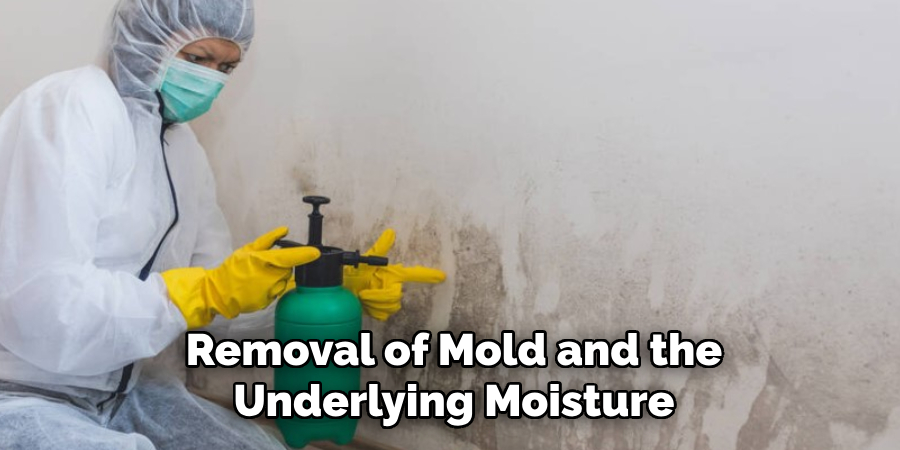
Addressing Mold Contamination
A. Developing a Mold Remediation Plan Based on Test Results and Severity of Contamination
Once the presence and severity of mold contamination have been established through testing, the next critical step is the development of a mold remediation plan. This plan should be tailored to the specific needs of the HVAC system and the building it serves, taking into account the types of mold present and the extent of the contamination.
Key components of the plan include identifying the source of moisture contributing to the mold growth, defining the scope of remediation efforts, and determining whether temporary relocation of building occupants is necessary during the remediation process.
B. Exploring Options for DIY Mold Removal vs. Hiring Professional Mold Remediation Services
The decision between undertaking mold removal as a DIY project or engaging professional services largely depends on the scale and type of mold present. Small areas of mold, less than 10 square feet, can often be addressed by building maintenance staff following EPA guidelines.
However, large-scale contamination, especially involving toxic mold species, warrants the expertise of professional mold remediation services. Professionals are equipped with the necessary safety gear, specialized equipment, and experience to effectively remove mold and address the underlying moisture source.
C. Implementing Preventive Measures to Minimize Future Mold Growth in Air Vents
Preventative measures are essential in mitigating the risk of future mold growth within HVAC systems. Regular maintenance and cleaning of air vents and ensuring proper ventilation throughout the building help reduce moisture accumulation, a key factor in mold growth. Monitoring humidity levels and repairing leaks promptly are also critical strategies.
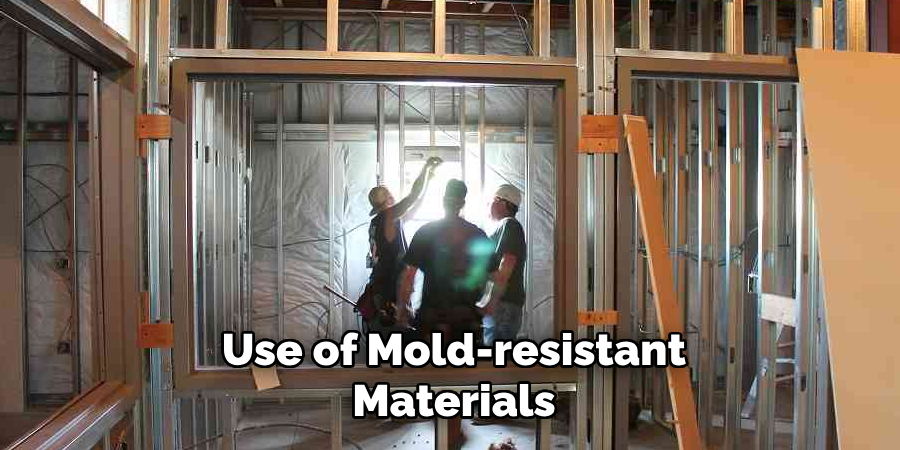
Additionally, the use of mold-resistant materials in construction and renovations can further diminish the likelihood of mold proliferation. Implementing these preventive steps, along with periodic mold testing, ensures a healthier indoor environment and extends the life of HVAC systems.
Preventive Maintenance and Monitoring
Preventive maintenance and monitoring are vital components in ensuring the long-term health and efficiency of HVAC systems, especially in combatting mold growth. Establishing a regular maintenance schedule for air vent cleaning and inspection is crucial.
Scheduled cleanings help in removing dust, debris, and any initial signs of mold, preventing it from becoming a larger issue. Inspections can identify any potential moisture problems early before mold has a chance to grow.
Another effective strategy is to install UV-C lights or air purifiers within the HVAC system. UV-C lights have been shown to kill mold spores and various types of bacteria and viruses, offering an additional layer of protection against indoor air contaminants. Similarly, air purifiers with HEPA filters can capture mold spores from the air, reducing the overall mold spore count in the environment.
Monitoring indoor air quality is also essential for the ongoing prevention of mold growth. This includes regular humidity control, as mold thrives in high-humidity environments. Reducing indoor humidity levels to between 30-50% can significantly decrease mold growth risk. Conducting periodic mold testing, even in the absence of visible signs of mold, ensures that any contamination is caught and addressed early, maintaining a healthy indoor environment.
Final Thoughts
Testing for mold in air vents is a fundamental practice to ensure the indoor air quality remains safe and healthy for occupants. It allows for early detection of mold presence, preventing potential health risks and structural damage. Identifying the types and levels of mold is critical, as it helps assess health risks and informs the remediation plan.
Consulting with mold remediation professionals provides expert analysis and recommendations, ensuring effective removal and prevention strategies are applied. Developing a comprehensive mold remediation plan based on test results is essential, considering whether DIY efforts or professional services are most appropriate.
Implementing preventive measures, such as regular HVAC maintenance, using mold-resistant materials, and monitoring indoor air quality, plays a crucial role in minimizing future mold growth. These steps collectively uphold the integrity of HVAC systems and safeguard the health of building occupants by maintaining clean, mold-free air vents.
Proactive testing and maintenance are the cornerstones of ensuring healthy indoor environments, especially regarding the pervasive issue of mold in air vents. Understanding how to test for mold in air vents is the first step toward taking control of the air quality in your living or working spaces. It’s not just about responding to the issue at hand but preventing future occurrences through diligent care and regular monitoring.
If you suspect that your air vents may be harboring mold, it’s imperative to act immediately. Engage in testing to confirm its presence, consult with experts for a thorough remediation plan, and do not underestimate the value of ongoing maintenance. Taking these proactive steps will not only protect the structural integrity of your HVAC systems but more importantly, the health and well-being of all occupants. Remember, a proactive approach to mold prevention is far more effective and less costly than a reactive one.

